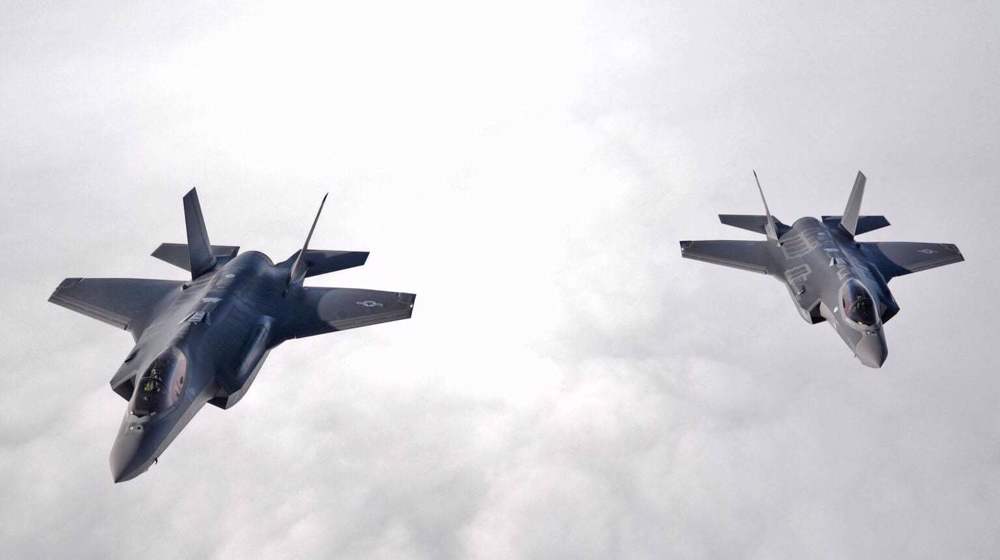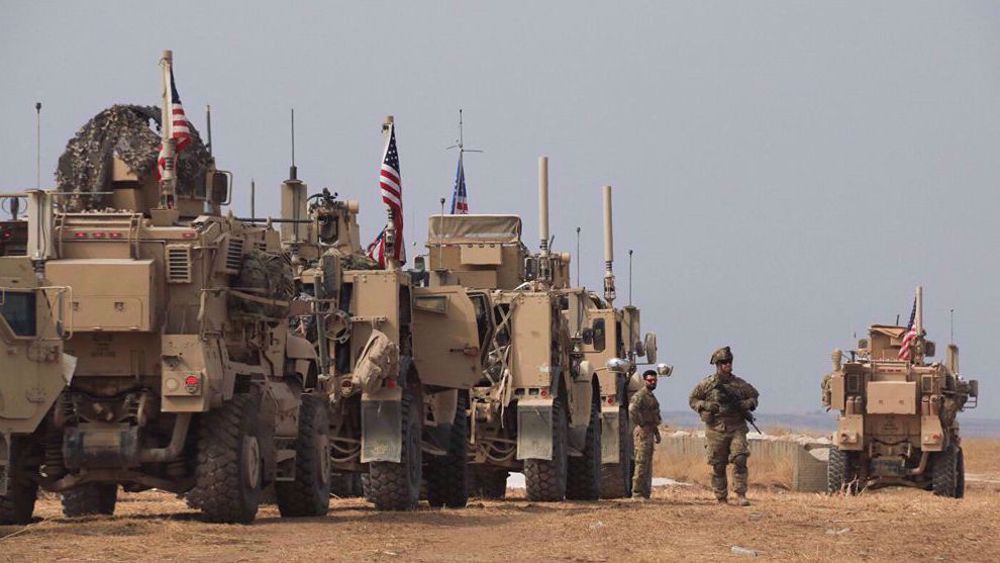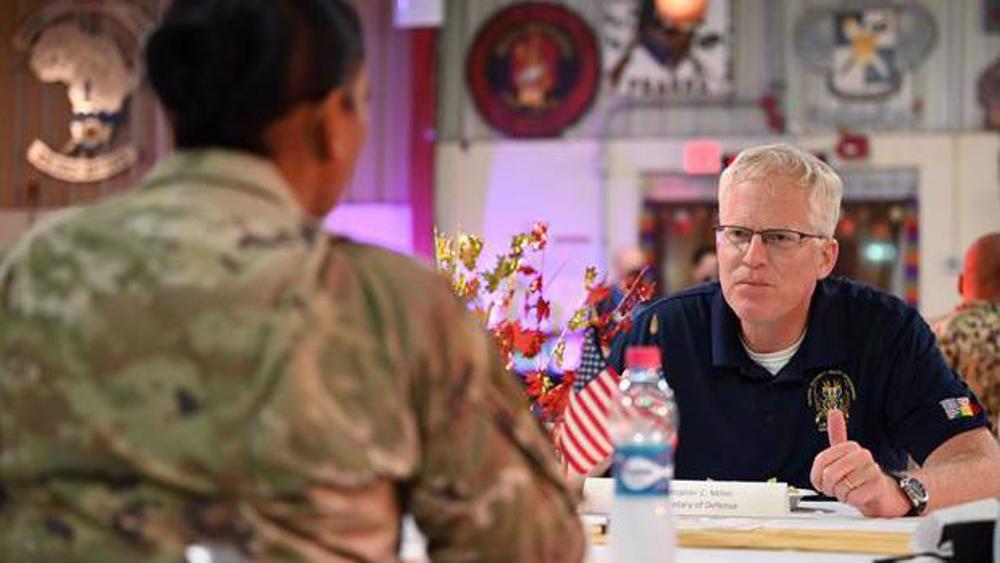Survey of 198 US military aviation deaths cites poor training, fatigue as key factors
An independent commission is recommending that a new safety czar be installed at the Pentagon after a survey of nearly 200 military aviation deaths over five years found fatigue and training and manning shortfalls were key factors in many mishaps.
The National Commission on Military Aviation Safety this week released a report on aviation accidents from 2013-2018, showing that inadequate management and often-overlooked shortfalls in training and experience can be tied to a surge in accidents, some of them deadly.
"Old jets make us work our people harder. We have to work them to death. That's a safety issue. We burn them out," one Navy official said, describing the chronic fatigue and burnout associated with supporting aging aircraft year after year.
"So much is being required of [instructor pilots] at the unit, and we have a shortage of IPs, and they are getting burned out. That's why our retention rates suck," added an Army pilot, speaking to the reason pilots weigh leaving the service.
A Marine Corps aviator was perhaps the most candid: "My kids don't know who I am" due to deployments, exercises, and perpetually long work days. "They don't know when I am going to be home. That stuff leads to the burnout and distraction while flying."
These were some of the uncensored comments military aviators and crewmembers offered within the commission's comprehensive report, released Dec. 3.
The congressionally mandated commission -- formed following a spike in deadly crashes in 2018 -- found that military aviation accidents claimed the lives of 198 pilots and aircrew between 2013 and 2018 as a result of multiple contributing factors such as a lack of flight hours and fatigued maintenance crews.
The mishaps occurred during more than 6,000 routine training events, and cost the government more than $9.4 billion in damages, including 157 destroyed aircraft, the report said. The news of the study was first reported by McClatchy.
"We had a high [operational] tempo, which had a tremendous impact on the workforce," Richard Healing, vice chairman of the commission, said during a Thursday phone call with reporters about the study findings. As officials compiled the report, military aviation mishaps "claimed another 26 lives, 29 aircraft" at the cost of $2.25 billion, according to a letter accompanying the study.
Investigators traveled to 80 different bases, depots and safety and test centers, and spoke with members of 200 units ranging in seniority from lower enlisted to the command level, who offered their feedback anonymously, added retired Army Gen. Richard Cody, the commission's chairman.
"Many of them have stayed with us, and reenlisted, and stayed on after 16 to 17 years of war," Cody said Thursday.
The intent of the report was to gain insight into how past accidents can shine a light on current missions, and even help prevent the next accident, he said.
"They know what 'right' looks like. But they're frustrated with the tempo, they're frustrated with the unpredictable funding, and they're also frustrated a bit being away from home as much as they are," Cody said.
'Demoralized' troops and declining safety procedures
During the two-and-a-half year investigation, the bipartisan commission studied a variety of factors in accidents and mishaps, including the underlying causes contributing to unexplained Physiological effects, or UPEs, delays in aviation maintenance and dwindling readiness of aircraft over time.
They found elements that contributed to the decline in aviation safety over the five-year span included the following:
- Increased operational tempo
- Lingering effects of budget shortfalls due to sequestration
- Insufficient flight hours
- "Distracted" and overworked maintainers saddled with excessive administrative duties
- Inadequately prioritized safety requirements
- Insufficient data collection to analyze increasing risks
Low morale took its toll, too, according to Healing.
"What we found was that morale was generally degraded," said Healing, also a former member of the National Transportation Safety Board and retired Coast Guard pilot.
"Pilots were demoralized by not being able to fly enough; the maintainers were demoralized by not having parts and things that they needed to make those airplanes fully mission-capable," he said.
Instead of increased flight hours to increase proficiency in the cockpit, pilots instead were granted waivers to bypass requirements.
"Except for the trainers and evaluators, everyone in my flight company had minimums waived," one Army pilot told the commission.
Waivers are an indicator that not enough aircraft are available for flight, often due to maintenance issues or too few instructor pilots, Cody said.
"If you're having to issue waivers too much, it ought to be reported and tracked [efficiently]," he said.
Maintainers, meanwhile, found themselves either "saturated" by constant work or lacking staff with enough experience to carry out the mission.
Skilled maintainers from each service said they found themselves spending more time reteaching basic skill sets to less-experienced crew.
"A lot don't know what a ratchet set is," said an Air Force noncommissioned officer interviewed for the report. "If you ask for a ratchet set, they bring a socket."
Other maintainers said they were overwhelmed or burned out from picking up slack because of dwindling manpower in their unit.
"It is just being tired," said a senior Air Force maintainer in an F-16 Fighting Falcon wing. "Knowing that with task saturation and sleep deprivation, work performance suffers. We see human factors and an increase in mishaps. They don't have experience and are tired. They are tired and are crying for help. The response is, 'shut up and color.'"
"We came away deeply troubled by the chronic fatigue we saw among these brave servicemembers," the commission said.
What the data said
In 2018, before the commission was formed, Military Times published an in-depth report showing that military aviation accidents across all platforms, including bombers, fighters, cargo, refueling and rotary aircraft, had increased 40% between 2013 and 2018.
The newspaper reported that 133 service members had been killed in aircraft mishaps in that timeframe. In 2018 alone, the military saw a six-year high of 39 aviation-related fatalities across all the services, according to data from Military Times and Task & Purpose.
Throughout 2017 and 2018, the Air Force and Navy also separately ordered indefinite operational pauses for their trainer aircraft after pilots at several bases experienced UPEs while in flight. Symptoms of UPEs include disorientation, shortness of breath, confusion and wheezing while in flight.
The spate of physiological events and trend of aviation accidents prompted lawmakers in the 2019 National Defense Authorization Act to establish the independent commission to review crashes, mishaps and other phenomena during the five-year span.
Much like Military Times, the commission found that most mishaps were at the Class C level, which includes those causing damages totaling between $50,000 and $500,000 and nonfatal personnel injuries still serious enough to result in lost work days.
"One of the things that popped up to us was class C's -- they were the biggest bucket," Cody said, adding the Class C investigations often do not receive as much scrutiny as the most severe Class A ones.
"We feel that the Class Cs are kind of the canary in the coal mine," he said.
In its review of Class A mishaps, which include those totaling $2 million or more in damage or resulting in permanent disability or loss of life, the commission found that 43% of them were attributable to human error, Cody said. Those errors included failure to follow procedure and improper coordination between pilots or between air and ground crew, he explained. About 38% of the mishaps were due to preconditions to include weather or environmental factors, while the remaining 19% were the result of improper manning, lack of parts and resources as well as lack of appropriate supervision, the report said.
The Army, Air Force and Navy had "moderate fluctuations" in Class A mishap rates between 2013 and 2018, while the Marine Corps had consistently higher rates in that period, the commission found. Meanwhile, Class B mishaps, including those with damages totaling between $500,000 and and $2 million, and which could include personnel hospitalizations or permanent disabilities, saw stable rates -- with the exception of the Navy, which saw increases.
By comparison, nearly every service saw a steady increase in Class C mishaps, as well as an escalation in costs to repair the damage.
Overlapping issues
Researchers concluded that many aviation safety issues "are uniquely interconnected," and the result of 'domino effects' on the force.
While budget uncertainty, the commission found, adversely affects "maintenance, the ability to purchase parts, aircraft availability, and pilot proficiency," it also emphasized that existing resources needed to be maintained properly.
"Increasing spare parts inventories does little good if there are not enough experienced maintainers to install them," the report said. "Fixing one issue may require fixing several related issues."
The imbalance across the many "different factors that impact aviation safety for the military increases risk," Cody stressed.
"It's not just one thing that you can point to; there [are] several things that over time accumulate that put the risk higher on particular crew," he said.
Recommendations
During a closed hearing this week, commission members briefed lawmakers from the House Armed Services subcommittee on readiness on its findings, and 25 steps it recommended for the Defense Department.
One of the commission's primary recommendations was for lawmakers to establish a joint safety council that reports directly to the defense secretary. Another key correction, Healing said, would be to standardize and streamline data collection for both UPEs and mishaps so the services could accurately analyze information to discover root causes and respond effectively.
Predictable budgets would help ensure proper flight hours as well as aviation support, the report noted. It urged lawmakers to "stop using continuing resolutions to fund national security, military readiness, and aviation safety."
The commission said any other tasks added to the workload of aviators and maintainers, aside from their primary function, should be eliminated, and encouraged rewarding and incentivizing "the professional achievements of aviation maintainers with recognition and professional development throughout their careers."
"We really focused on four areas where we think Congress, the Department of Defense, and the services can take immediate steps to reduce aviation mishaps," Cody said. "That is, pilots need to fly, maintainers need to maintain, data can save lives, and funding should be consistent."
(Source: Military.com)
Jordan sentences former lawmaker for supporting Palestinian resistance
Basij volunteer forces hold massive drills in southwestern Iran
Israeli war criminals 'not welcome', US city says after ICC ruling
US vetoing of Gaza ceasefire resolution ‘disgraceful’: Iran’s UN envoy
VIDEO | IAEA adopts anti-Iran resolution tabled by E3
VIDEO | Iran's president urges Pope to help end Israel's onslaught in Gaza
Iran's senior legal official: ICC arrest warrant for Netanyahu ‘great victory'
Nov. 21: ‘Axis of Resistance’ operations against Israeli occupation
















 This makes it easy to access the Press TV website
This makes it easy to access the Press TV website